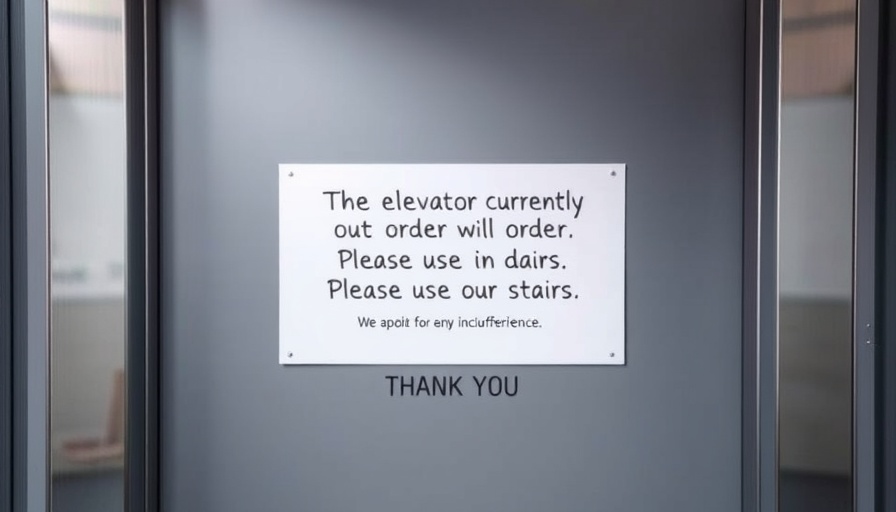
How a Broken Elevator Poses Challenges for Seniors
In a concerning situation at Jubilee at Texas Parkway, a senior living community in Missouri City, residents have faced weeks of distress due to a malfunctioning elevator. For many elderly residents, like 76-year-old Bettie Benford, this isn’t just an inconvenience but a major health concern. With her husband, who relies on regular dialysis treatments, the breakdown of the only working elevator leaves them unable to access necessary medical appointments or even step outside for fresh air. Such predicaments underscore the urgent requirement for reliable facilities for senior living.
The Ripple Effect: How Elevator Failures Affect Seniors
This unfortunate elevator failure is not an isolated incident. Many similar facilities across Texas face maintenance issues that can trap vulnerable residents in their apartments. These breakdowns serve as a reminder of how critical it is for lawmakers and local governments to ensure functional amenities in senior housing. The dependency of many seniors on elevators, especially those living in multistory buildings, illuminates an alarming reality: when these elevators fail, so do their essential lifelines to health and social interaction.
Lawmakers Taking Action: A Needed Response
In light of these ongoing issues, Missouri City officials and state lawmakers are stepping in to find solutions. Advocates for seniors are pressing for regulations that enforce strict maintenance standards for elevators in retirement communities. The government’s involvement aims not just to address individual hardships but also to prevent future crises affecting senior residents statewide. The hope is that any reforms will not only improve the immediate conditions of places like Jubilee but will also instigate systematic changes for better senior care.
Historical Context: The Importance of Housing for Seniors
The plight experienced at Jubilee at Texas Parkway illustrates a broader issue of senior living conditions in Texas, reflecting a history of neglect concerning elderly residents. As the population ages, ensuring accessible, safe, and well-maintained housing must be prioritized. Legislative efforts in the past have aimed to address seniors' needs, but incidents like this one highlight how much work remains.
Community Support: Local Heroes Step In
In response to this ongoing situation, community members have mobilized efforts to support their neighbors. From food drives to check-in initiatives, local residents are stepping up to assist those trapped indoors. This outpouring of support emphasizes the critical role of community in addressing trials faced by senior citizens. It also offers a reminder of the collective responsibility we share in ensuring everyone maintains a quality of life, regardless of age.
Future Predictions: Trends in Senior Living Services
As society progresses, the trend will likely gravitate towards more integrated and responsive health and living services for seniors. Innovations in smart home technology, including alert systems for emergencies or automated accessibility features, could drastically improve the living situation for many elderly individuals. Increased awareness and advocacy will undoubtedly push both private and governmental bodies to prioritize these initiatives, establishing more robust support for senior communities.
Decisions You Can Make to Support Seniors
For individuals looking to make a difference, there are numerous avenues available. Getting involved with local senior organizations, advocating for better housing standards, or even volunteering to provide companionship and support to elderly neighbors can help enhance their quality of life. Engagement at a personal level can create a significant positive impact.
**Call to Action:** As lawmakers gear up to address the pressing issue of elevator malfunctions in senior housing, it’s time for community members to lend their voices. If you find yourself in a position to safely advocate for improved living conditions for seniors or support local initiatives that prioritize their well-being, now is the time to act. Join local organizations, reach out to your elected officials, and consider how you can directly influence change in your community. Together, we can ensure that vulnerable residents are not left behind, and that their right to accessible and safe living conditions is upheld. Add Element
Add Element  Add Row
Add Row 



Write A Comment